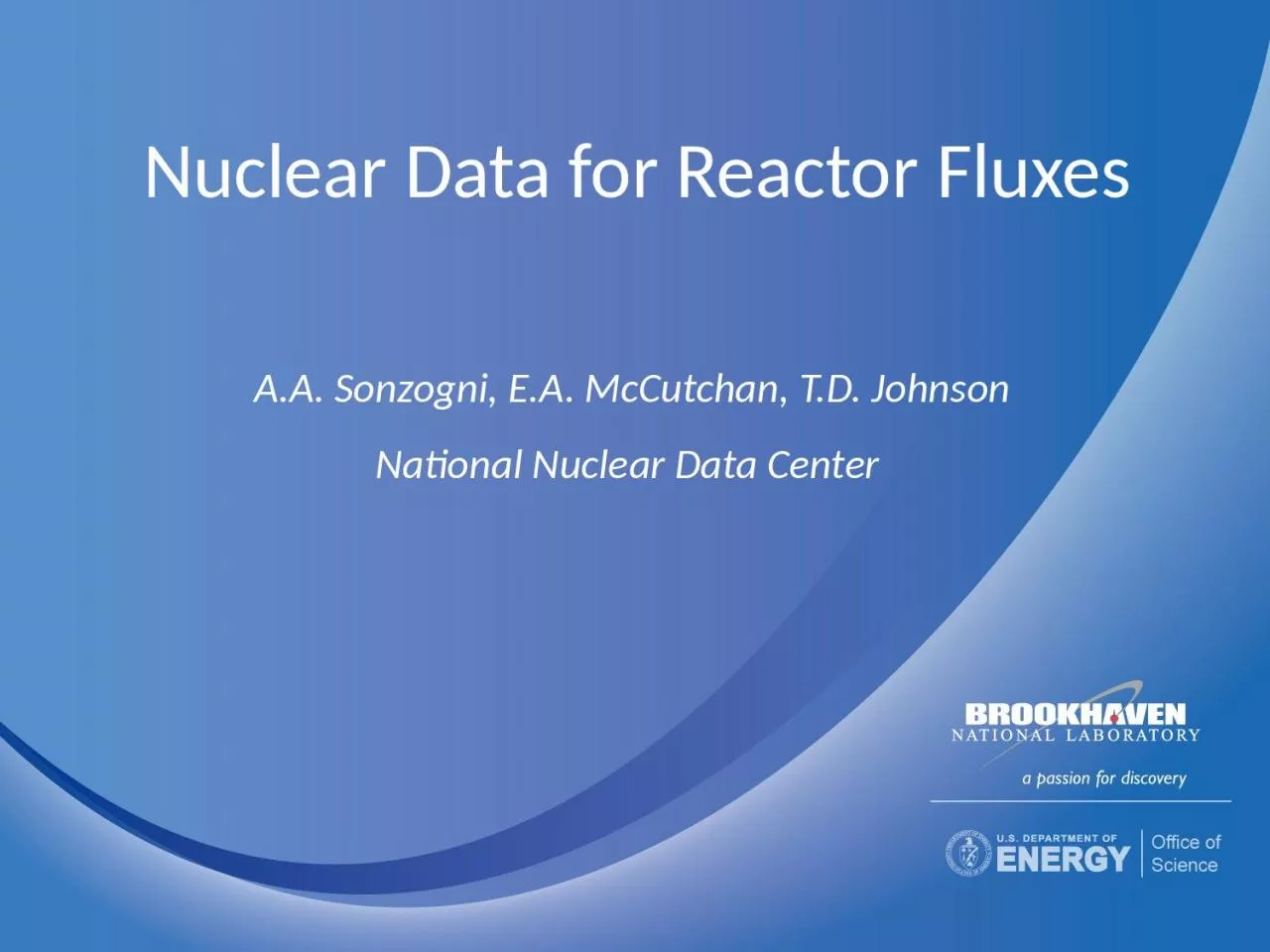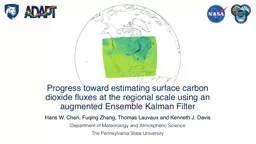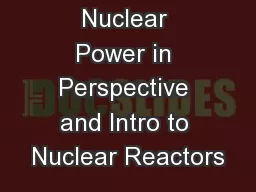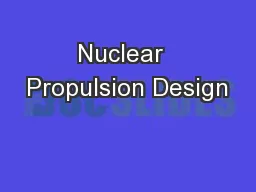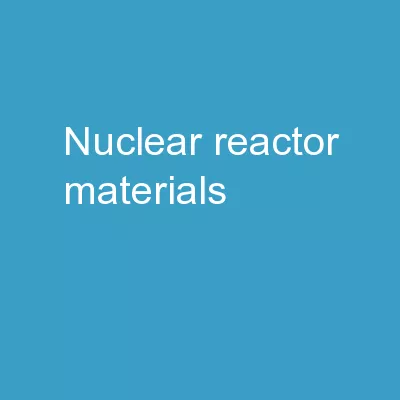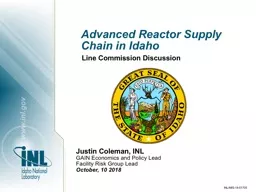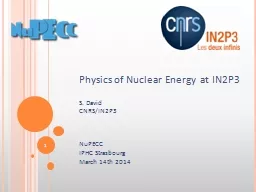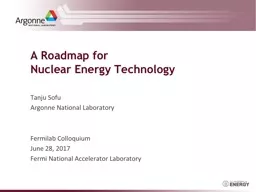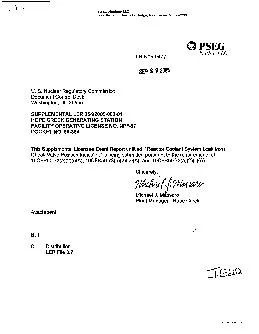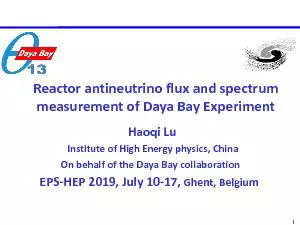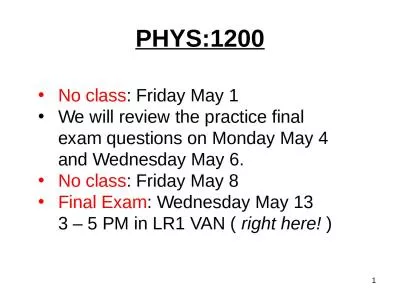PPT-Nuclear Data for Reactor Fluxes
Author : WickedlyCool | Published Date : 2022-07-28
AA Sonzogni EA McCutchan TD Johnson National Nuclear Data Center Outline Summation method to calculate antineutrino spectra How did we get involved in this
Presentation Embed Code
Download Presentation
Download Presentation The PPT/PDF document "Nuclear Data for Reactor Fluxes" is the property of its rightful owner. Permission is granted to download and print the materials on this website for personal, non-commercial use only, and to display it on your personal computer provided you do not modify the materials and that you retain all copyright notices contained in the materials. By downloading content from our website, you accept the terms of this agreement.
Nuclear Data for Reactor Fluxes: Transcript
Download Rules Of Document
"Nuclear Data for Reactor Fluxes"The content belongs to its owner. You may download and print it for personal use, without modification, and keep all copyright notices. By downloading, you agree to these terms.
Related Documents

